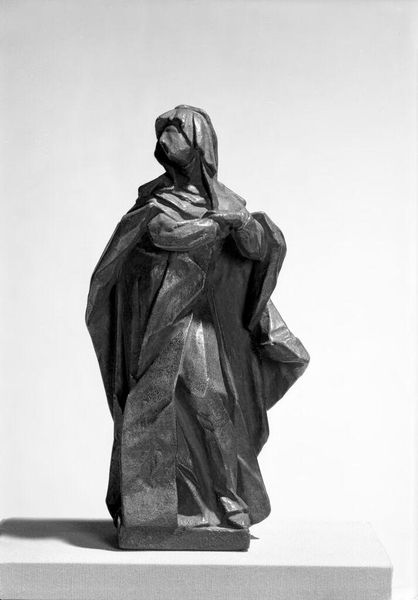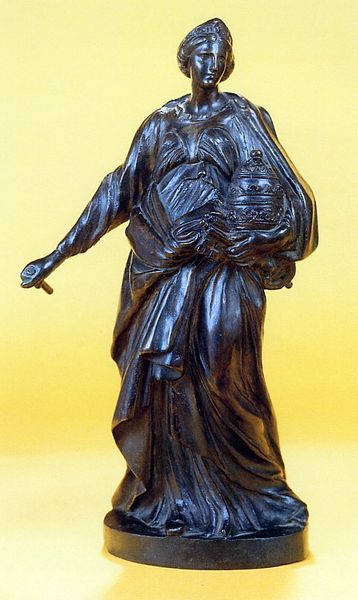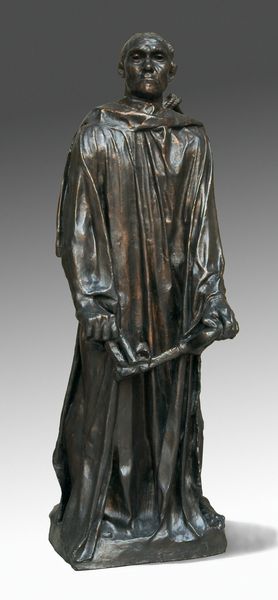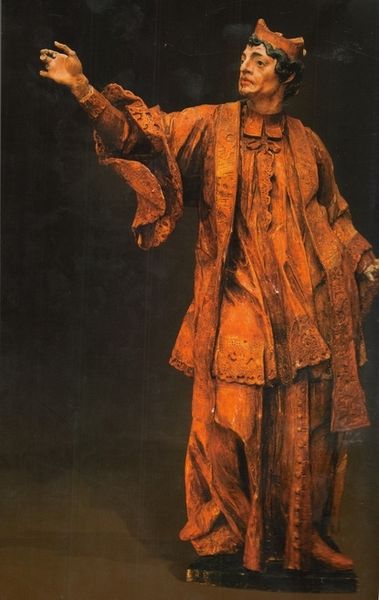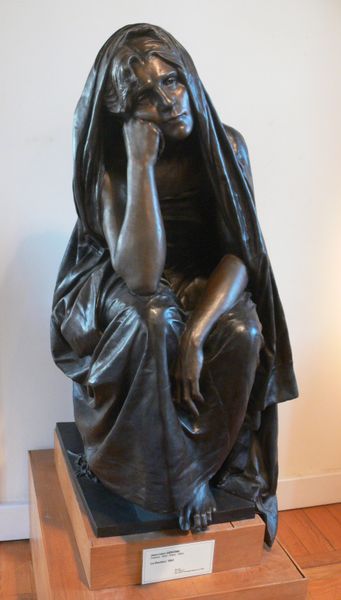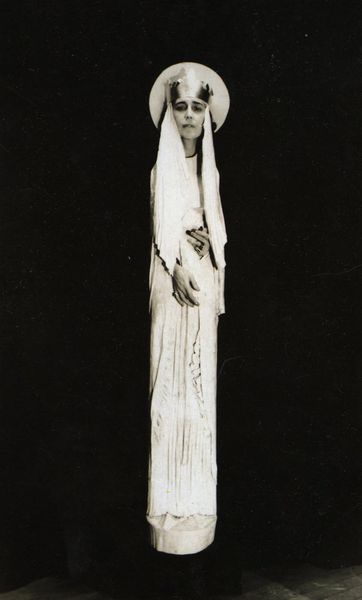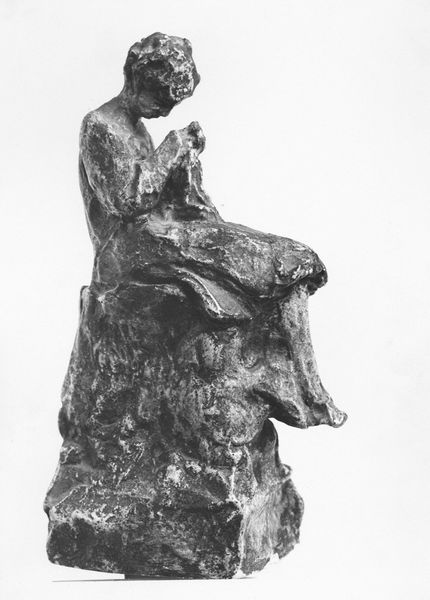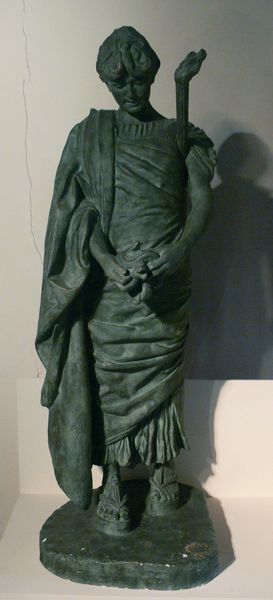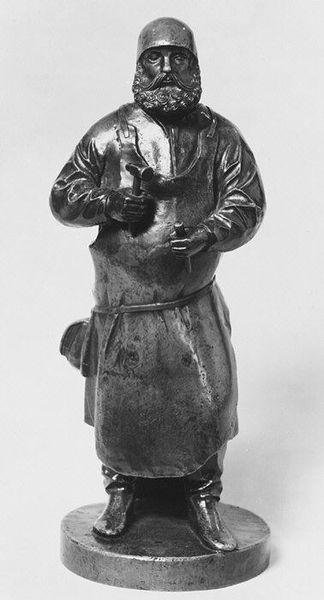
Copyright: Public domain
Curator: Right now, we’re looking at Rodin’s bronze sculpture, "Balzac," created in 1897. What are your immediate thoughts? Editor: I see a cloaked figure emerging from darkness, or maybe consumed by it. It's immense, raw. It has a haunting almost spectral quality. Curator: That’s a common first impression. What Rodin aimed for was portraying Balzac's inner genius, the monumental force of his creativity. The cloak, which he apparently made himself by piecing together different fabrics, was his disguise, a carapace. Editor: I notice the lack of precise detailing; the way Rodin shaped the cloak gives a feeling of spontaneous creation and boundless inspiration. It almost abstracts the person it’s meant to represent. How revolutionary. Curator: Indeed! He received considerable flak, with critics blasting the work for its seeming unfinished character and crude execution. Editor: Yet this rugged, unfettered approach is precisely what draws me. Rodin presents the artistic energy and soul, rather than merely mimicking appearance. What does Balzac’s stance convey? Curator: Some art historians call it phallic. He stands resolute with his gaze averted and shrouded, embodying a creator wrestling to deliver creative life itself, enduring critique and misinterpretation from those who expect a pretty reproduction. Editor: The courage to show the interior rather than flatter the surface – Rodin was fearless. What do you consider its lasting impact? Curator: It paved the way for later modernist sculpture, showing how feeling and conceptual heft triumph over polished precision. Rodin gave us a glimpse behind the curtain to celebrate the drama of being a creator. Editor: For me, it is how the artwork holds that feeling of wrestling to create that echoes across time. The statue evokes the sheer, awesome power – and toll – of transforming thought into something tangible. It really is something.
Comments
No comments
Be the first to comment and join the conversation on the ultimate creative platform.
